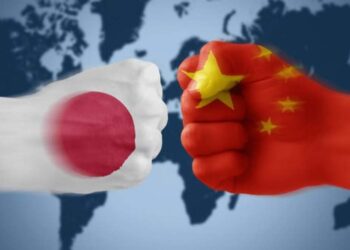Pakistan in the midst of fighting a terror wave and experiencing the worst phase of relations with both India and Afghanistan, hosted a day-long ten nation Economic Cooperation Organization summit. The summit adopted Islamabad declaration and vision 2025, a plan to expand trade and prosperity among member states. Turkey, Pakistan and Iran co-founded ECO in 1985 as a successor body to erstwhile Regional Cooperation Development and expanded in 1992, when former Soviet Union, Central Asian Republics joined it. The 2017 summit took place after a gap of five years.
Pakistan was successful in using the summit to showcase its potentials as one of Asia’s emerging markets where PM Nawaz Sharif pointed towards the acknowledgement of International Monitory Agencies of Pakistan’s improving economic indicators. More importantly, Pakistan was able to dispel the India’s created hype of isolating it, even Afghanistan in spite of closed border and frayed relations attended the summit and did not boycott it.
The summit was also attended by all the member states including Azerbaijan, Kazakhstan, Iran, Tajikistan and Uzbekistan, besides a special representative from China. China’s presences at the summit had immense significance. The Chinese vice Foreign Minister Zhang Yesui attended the summit on a special invitation, just prior to this he had mat the Indian counterpart in Beijing. The summits theme “Connectivity for Regional Prosperity “assumes special significance because of China Pakistan Economic Corridor.
The ECO secretary General Halil Ibrahim said special emphasizes has been given to corridors, which will provide access to ECO land locked countries. The CPEC has infused a new life into ECO. Most members had given up on it. The interest and commitment shown by the Turkish President Recep Tayyip Erdogan and the Iranian president Hassan Rouhani raised its level of importance. The outcome document says the leaders envision a more efficient and effective ECO equipped with required capabilities and resources to better serve the noble objectives of the organization.
The requisite momentum of regional connectivity cannot be achieved unless the region moves beyond the conflict paralysis it’s embroiled in right now. Pakistan’s relations with India and Afghanistan are an impediment. The closure of Pak-Afghan border after Pakistan was hit by a wave of terrorism, that took the lives of hundred plus people are issues that stick out as sore thumbs to the larger construct of regional connectivity. However, the only conflict named in the declaration was Armenia-Azerbaijan conflict.
The glaring omission of Kashmir and Pakistan’s relations with Afghanistan are indicative of an attitude of avoidance rather than addressing the issues.
The fifth generation resistance in Kashmir cannot be ignored specially now because India is using its clout in Afghanistan to destabilize Pakistan and the theatre of conflict between India and Pakistan has the three-front dimension, Eastern, Western and Internal.
Afghanistan show off lack of importance for the ECO summit and using it to voice its grievances has the implicit message of Afghanistan lack of interest in the regional connectivity which it can ill afford for one but perhaps more importantly it is also indicative of lack of commitment to stabilize Afghanistan itself. The Afghans have to make a conscious decision to make choices that are in their best interest and that of their Favourite benefactor.
The way forward:
Even though the conflict scenario of the region is pretty grim, there is hope. The regional military and economic rivals India and China are trying to put their differences aside in an effort to find a common ground on dealing with Afghanistan. China appeared open to finding solutions said an Indian official reporting on Indian Foreign Secretary S. Jaishankar’s recent visit to Beijing.
China is also working to create an Afghan peace process and has been holding talks in Islamabad since early 2016 along with Afghanistan, the US, and Pakistan (the Quadrilateral Coordination Group). While the Taliban are refusing to negotiate so far, it is important to keep the effort alive. In July 2014, a delegation of Taliban negotiators visited China, apparently to report on the situation in Afghanistan from their perspective.
After the fourth meeting of the Quadrilateral Coordination Group presented a bleak future for direct talks between the Afghan government and the Taliban, a top member of the Chinese military visited Kabul in February, 2016. General Fang Fenghui, a member China’s Central Military Commission and chief of the CMC’s General Staff, met top Afghan leaders. For the first time in the history of Sino-Afghan bilateral relations, Fang agreed to allocate 480 million yens ($73 million) to Afghan Security Forces.
New alliances and power triangles are emerging in the region.
This region is experiencing the transition of power from the west to the east and the diffusion of power within. If the challenges of militancy can be addressed through collective response mechanisms, the elusive dream of regional connectivity in this part of the world may emerge as its new reality. Afghanistan can also emerge as the zone of cooperation rather than competition and thus the fulcrum of connectivity. All that we need is that sanity should prevail.
















